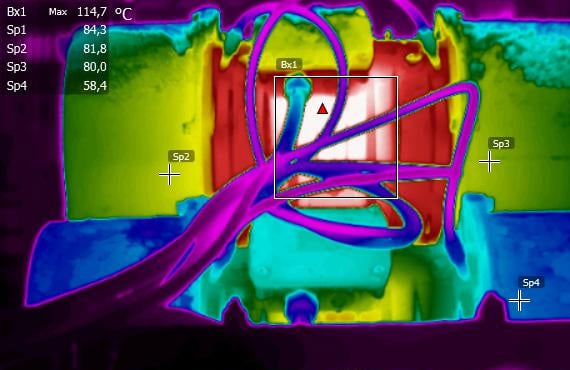Minimizing risk factors
As the economy continues to be uncertain, many manufacturing facilities are forced to be cautious with their spending. As a result, in order to maintain stable production with reduced staff and budgets, they are often tempted to make sacrifices in their maintenance budget, preferring to cure rather than prevent. This is a mistake, however, as it could potentially harm their business in the long run.
Indeed, maintenance is an essential component of any plant. It ensures that manufacturing equipment never becomes inoperable and loses efficiency. It also supports, or even improves, productivity. Finally, it also aims to reduce risk factors for employees. No plant is immune to a situation that can lead to a serious accident in the workplace.
Avoiding fires with electrical thermography
This last point was particularly true for a Laurentide Controls client in the pulp and paper industry. The client was able to avoid serious consequences when Laurentide identified a malfunction in one of its control panels. They were able to prevent a fire that could have damaged their equipment, resulting in major production interruptions, but more importantly, putting the health of their employees at risk.
Fortunately, Laurentide was called in on time to perform an electrical thermography mandate. The objective was to rule out any urgent anomalies on its equipment, thus avoiding any unplanned business interruptions and reallocating the maintenance budget to a more urgent category.
Understanding electrical thermography for preventive maintenance
Experienced and certified technicians from Controls inspected, analyzed, and diagnosed the paper mill's equipment using a thermographic camera. Thermography or thermal imaging is an effective diagnostic tool for preventive maintenance, which provides a thermal image of the surface of an equipment using infrared light. This thermal measurement process allows the detection of anomalies invisible to the naked eye. An expert then proceeds with the analysis and makes recommendations in order to take corrective measures on the mechanical and electrical equipment before they fail.
The benefits of electrical thermography for plants
The consequences of a fire caused by bad wiring can be dramatic not only in human terms but also in economic terms. If the hot spot degradation had developed into a local fire in the control panel, an unplanned production shutdown would have ensued, requiring emergency repairs that could last several days and cost hundreds of thousands of dollars.
Thermographic analysis is one of the most effective and least expensive methods for detecting heat spots. Not only can thermography be performed without interrupting operations, but it can also prevent incidents, as well as save time, money and energy, which are important factors for any plant that wishes to be competitive in the current economic context.

Preventive Maintenance

